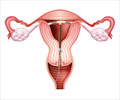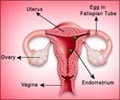160 million women worldwide have unmet contraception needs and reveals large differences in types of contraceptives used across the world from 1970 to 2019.

The authors found large differences between regions in the types of contraceptives used, with women in some regions relying substantially on permanent contraceptive methods and they suggest that considering the contraceptive preferences of different groups and diversifying options to suit the needs of groups with unmet need is the key part of unlocking the social and economic benefits of contraception.
The most comprehensive assessment of worldwide contraceptive need and use estimated that over 160 million women and adolescents with need to prevent childbearing remained without contraception in 2019 – despite major increases in use at a global level since 1970. This study provides estimates of worldwide contraceptive use, need and type continuously from 1970 to 2019 by country, age group and marital status.
Permanent methods, such as female sterilization, are more likely to be used by older women, while younger women and adolescents tend to use short-acting methods, like oral contraceptive pills or condoms. The results were published in the journal Lancet.
TOP INSIGHT
In 2019, the availability of contraceptives still differed significantly between regions and across different countries. Southeast Asia, East Asia and Oceania had the highest use of modern contraceptives and demand satisfied whereas sub-Saharan Africa had the lowest.
Gaps in Contraceptive Use after Major Global Progress
Based on data from 1,162 self-reported representative surveys on women’s contraceptive use, the authors used modelling to produce national estimates of various family planning indicators, including the proportion of women of reproductive age (15–49 years) using any contraceptive method, the proportion of women of reproductive age using modern methods, the types of contraceptives in use, demand satisfied with modern methods, and unmet need for any contraceptive method.Women were defined as needing contraception when they were married or if unmarried, sexually active, able to get pregnant and not wanting a child within two years, or if they were pregnant or had just given birth but would have preferred to delay or prevent their pregnancy.
Since 1970, the world has seen major increases in contraception use, driven by a significant shift from using less effective, traditional methods to using more effective, modern contraceptives, including oral contraceptive pills, intrauterine devices (IUDs), and male and female sterilization contraceptive methods. However, there remains key gaps in use.
Worldwide, the share of women of reproductive age using modern contraception increased from 28% in 1970 to 48% in 2019. Demand satisfied rose from 55% in 1970 to 79% in 2019. Despite the major increases, 163 million women who were not currently using contraception were considered to have need in 2019 (out of 1.2 billion women who needed contraception in total).
What are the Differences that may Lead to Failure to Reach the Goal?
In 2019, the availability of contraceptives still differed significantly between regions and across different countries. Southeast Asia, East Asia and Oceania had the highest use of modern contraceptives (65%) and demand satisfied (90%); whereas sub-Saharan Africa had the lowest use of modern contraceptives (24%) and demand satisfied (52%). Between countries, levels of modern contraceptive use ranged from 2% in South Sudan to 88% in Norway. Unmet need was highest in South Sudan (35%), Central African Republic (29%) and Vanuatu (28%) in 2019.The Family Planning 2020 Initiative (FP2020) set a goal of increasing the number of women using modern contraception by 120 million between 2012 and 2020 in 69 priority countries. The study estimated that the number of women using contraception increased by 69 million between 2012 and 2019 in these countries (excluding Western Sahara), leaving the initiative 51 million short of reaching its goal if these levels remained unchanged in 2020.
The study finds that women and adolescents in the 15 to 19 and 20 to 24 age groups have the lowest rates of demand satisfied globally – estimated at 65% and 72%, respectively, as compared to other groups. Those aged 15 to 24 comprise 16% of total need but 27% of unmet need – amounting to 43 million young women and adolescents worldwide not having access to contraceptives they need in 2019. The largest gaps globally were among young, married women.
What does the Lack of Contraceptive Variety may Mean to Certain Groups?
The types of contraceptive methods in use vary significantly by location. The authors suggest that the dominance of single methods could indicate a lack of suitable choices for women and adolescent girls.In 2019, female sterilization and oral contraceptives were dominant in Latin America and the Caribbean; the oral contraceptive pill and condoms in high-income countries; IUDs and condoms in central Europe, eastern Europe and central Asia. Female sterilization comprised more than half of all contraceptive use in south Asia. In addition, in 28 countries, more than half of women were using the same method, indicating that there may be a limited availability of options in these areas.
Finally, the authors note some limitations of their study. The criteria used to identify women in need of contraception may not capture certain women in need, including women who underreport sexual activity due to social stigma (e.g., among unpartnered women or adolescents), women who are not sexually active precisely because they lack contraception, or women who are dissatisfied with their current method of contraception. In addition, the estimates are based on more available data from partnered than unpartnered women.
Source-Eurekalert
 MEDINDIA
MEDINDIA




 Email
Email





